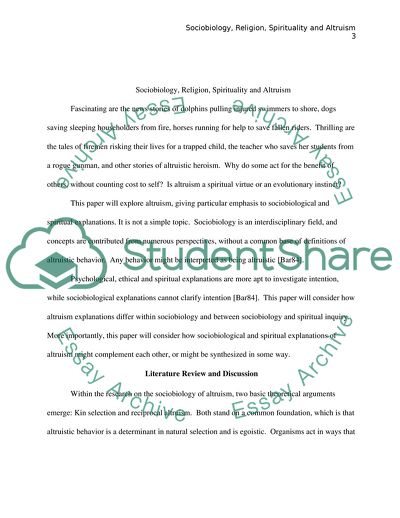Cite this document
(Sociobiology, Religion, Spirituality, and Altruism Report Example | Topics and Well Written Essays - 1500 words, n.d.)
Sociobiology, Religion, Spirituality, and Altruism Report Example | Topics and Well Written Essays - 1500 words. https://studentshare.org/sociology/1780052-how-do-we-understand-altruism-in-the-face-of-sociobiology
Sociobiology, Religion, Spirituality, and Altruism Report Example | Topics and Well Written Essays - 1500 words. https://studentshare.org/sociology/1780052-how-do-we-understand-altruism-in-the-face-of-sociobiology
(Sociobiology, Religion, Spirituality, and Altruism Report Example | Topics and Well Written Essays - 1500 Words)
Sociobiology, Religion, Spirituality, and Altruism Report Example | Topics and Well Written Essays - 1500 Words. https://studentshare.org/sociology/1780052-how-do-we-understand-altruism-in-the-face-of-sociobiology.
Sociobiology, Religion, Spirituality, and Altruism Report Example | Topics and Well Written Essays - 1500 Words. https://studentshare.org/sociology/1780052-how-do-we-understand-altruism-in-the-face-of-sociobiology.
“Sociobiology, Religion, Spirituality, and Altruism Report Example | Topics and Well Written Essays - 1500 Words”. https://studentshare.org/sociology/1780052-how-do-we-understand-altruism-in-the-face-of-sociobiology.


